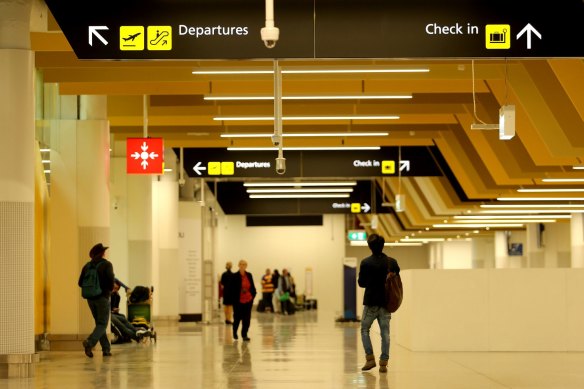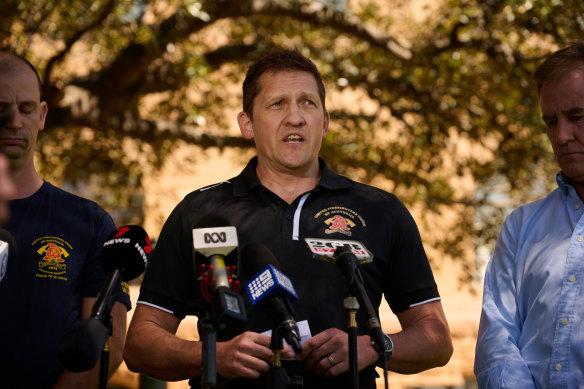
Many domestic airports in Australia and internationally do not operate with specialist aviation firefighters, and the staffing levels at all airports are monitored by the air safety regulator, the Civil Aviation Safety Authority.
The firefighters had been negotiating their pay and conditions with Airservices for about five months before discussions stalled earlier this year. Airservices has offered the crews an 11.2 per cent pay rise over the next three years, with no changes to their entitlements.

Melbourne Airport is one of the Australian airports which has an extreme safety risk rating.Credit: Pat Scala
Airservices alleges the union’s demand for a 20 per cent pay increase over the same three-year period would cost the industry and passengers an additional $128 million, and chief executive Jason Harfield went as far as alleging the union is hiding behind safety concerns as a way to ramp up pay.
“This disruptive campaign has nothing to do with staffing levels, which are monitored and regulated by CASA as the aviation safety regulator,” he said last week.
Wes Garrett, branch secretary of the union, said the documents provided to the committee confirmed their safety concerns and the need for better protections. The union has asked for a staffing clause in the enterprise bargaining agreement to ensure there are enough firefighters at airports to meet the Task Resource Analysis requirements.
“These leaked documents confirm that Australia’s air travellers face a dire risk every time they set foot on an aircraft in Australia,” Garrett said.

UFU aviation branch secretary Wes Garrett said firefighters will stop work from 6am on April 15 at airports all over the country.Credit: Michael Quelch
“These resource shortages include a lack of key personnel to operate breathing apparatus, shortages of firefighting agents to suppress multiple incidents, insufficient personnel and vehicles to protect both sides of a crashed aircraft, a lack of personnel for effective fire ground command and control, and a lack of procedural control at Australia’s airports.”
The head of the Australian Airports Association, James Goodwin, who represents about 400 airports across the country, including the 27 which are likely to be affected by the industrial action, said he hoped the industry urgently resolved the situation.
“I would hope any industrial action won’t disrupt the travelling public at a time when the aviation and tourism sectors are rebuilding,” he said.
Loading
The industrial action escalation is another blow to Airservices, which is often at loggerheads with its workers over insufficient staff. Civil Air, the association which represents air traffic controllers, told The Australian last week its members are also preparing to vote on whether to take similar strike action for the first time in more than 20 years.
Civil Air will lodge a protected industrial action ballot with Fair Work in the coming weeks after more than 14 meetings with Airservices since November failed to resolve the bulk of their claims pertaining to overtime, pay and other entitlements.
There is a chronic staffing issue across Australia’s air traffic control towers that the government body has been desperately trying to address since COVID-19, when it offered an early retirement incentive to some employees and hundreds of others quit while the industry ground to a halt.
Airservices expects more than 70 new air traffic controllers to begin working this year and will recruit at least 80 annually.
The Business Briefing newsletter delivers major stories, exclusive coverage and expert opinion. Sign up to get it every weekday morning.









 Add Category
Add Category